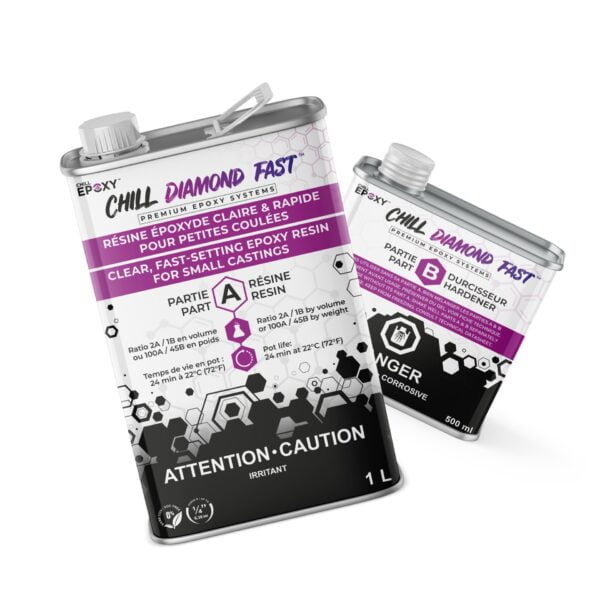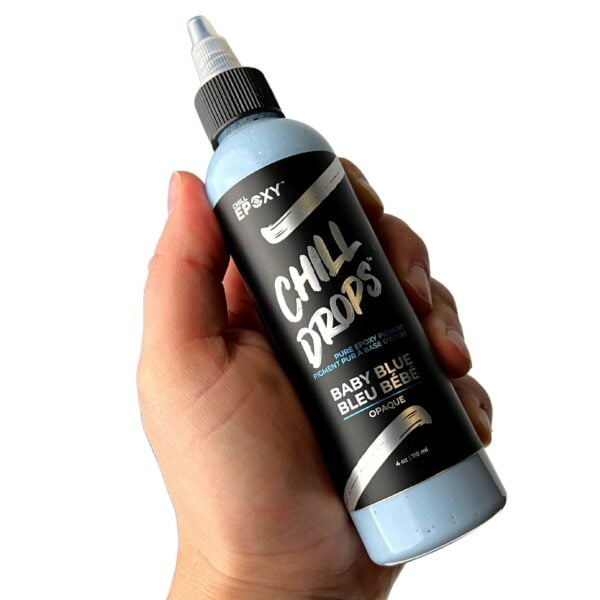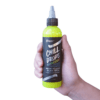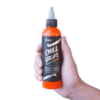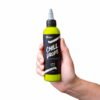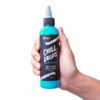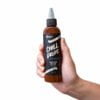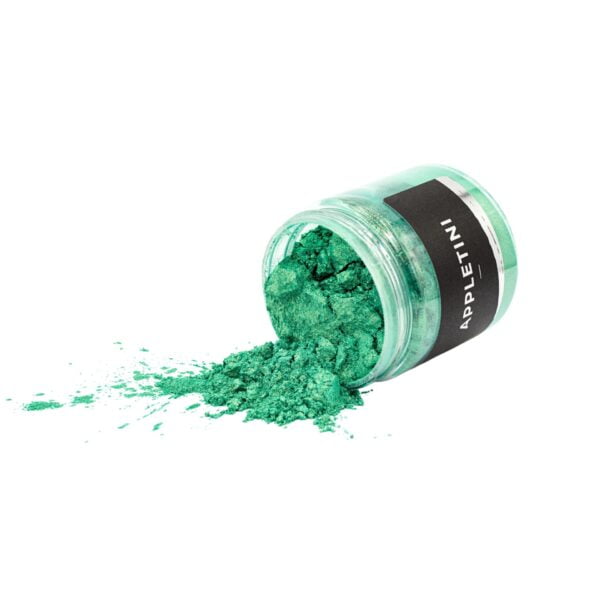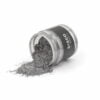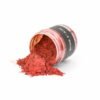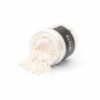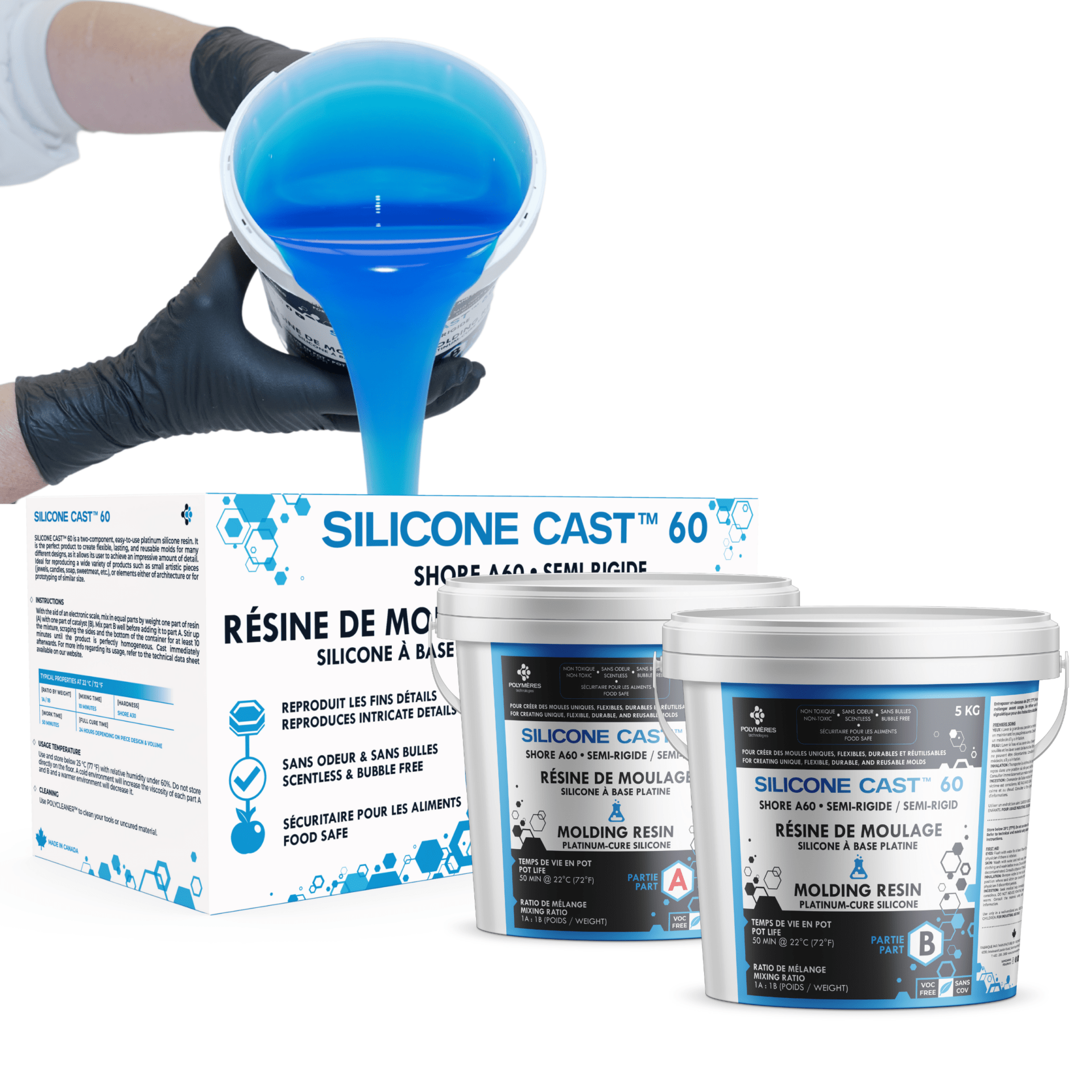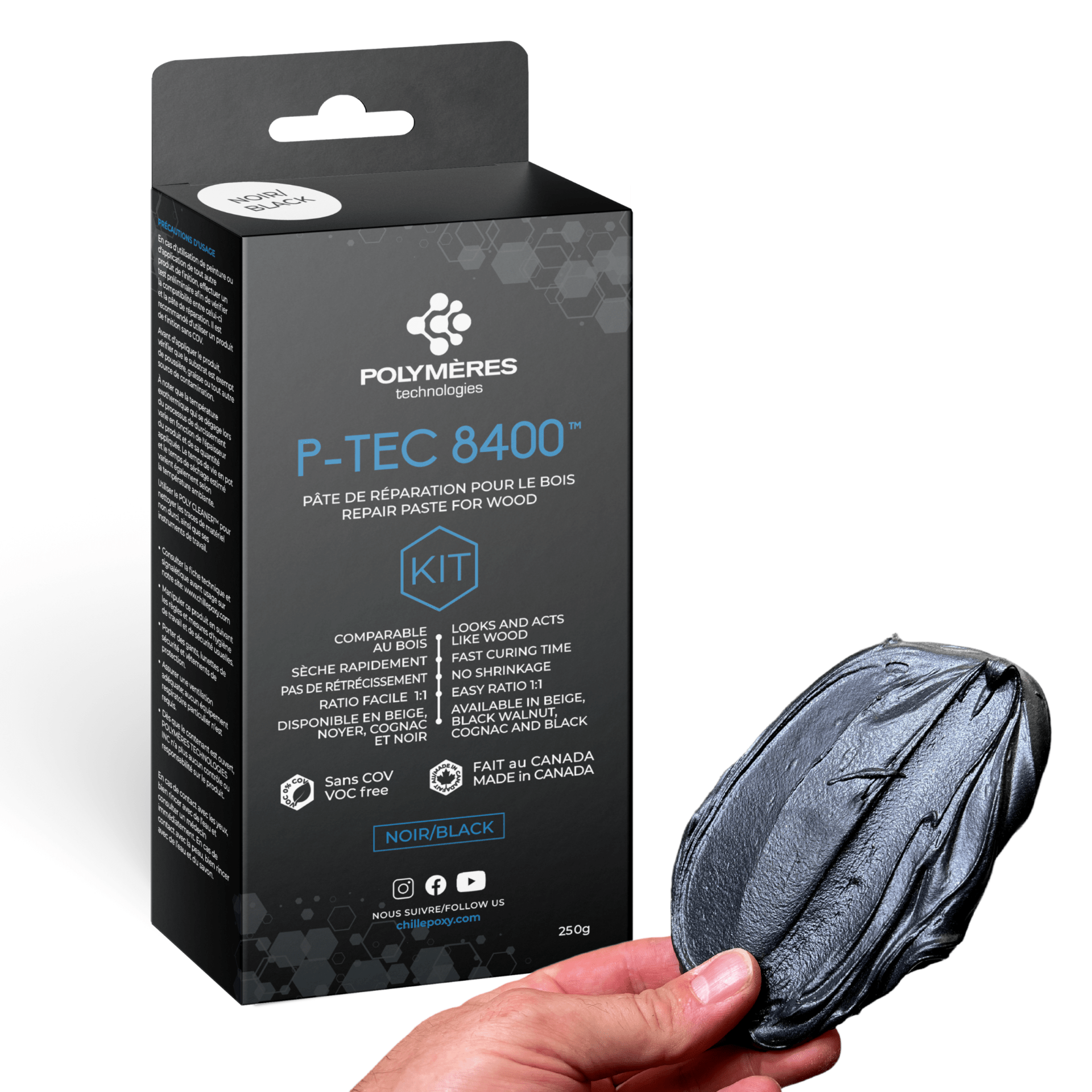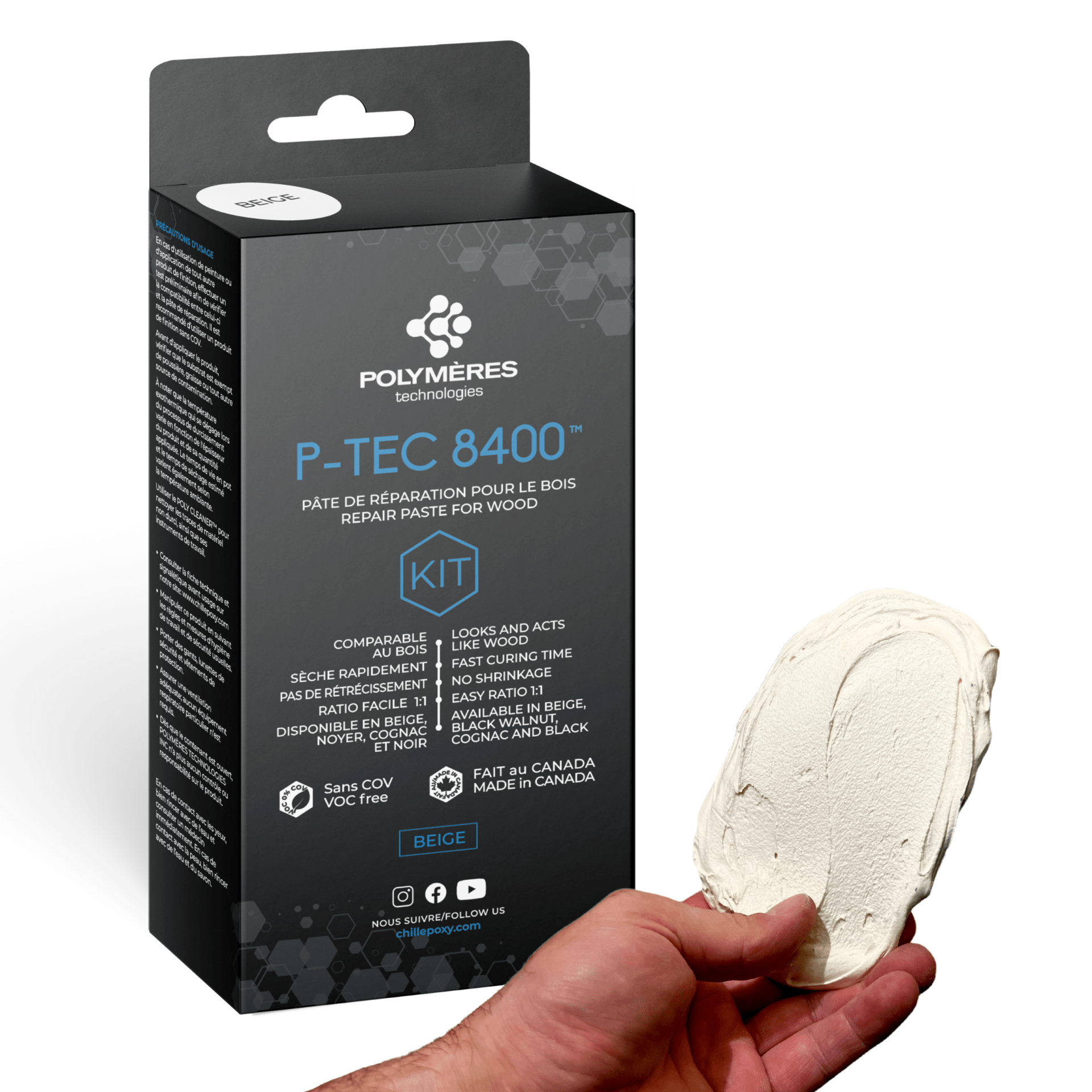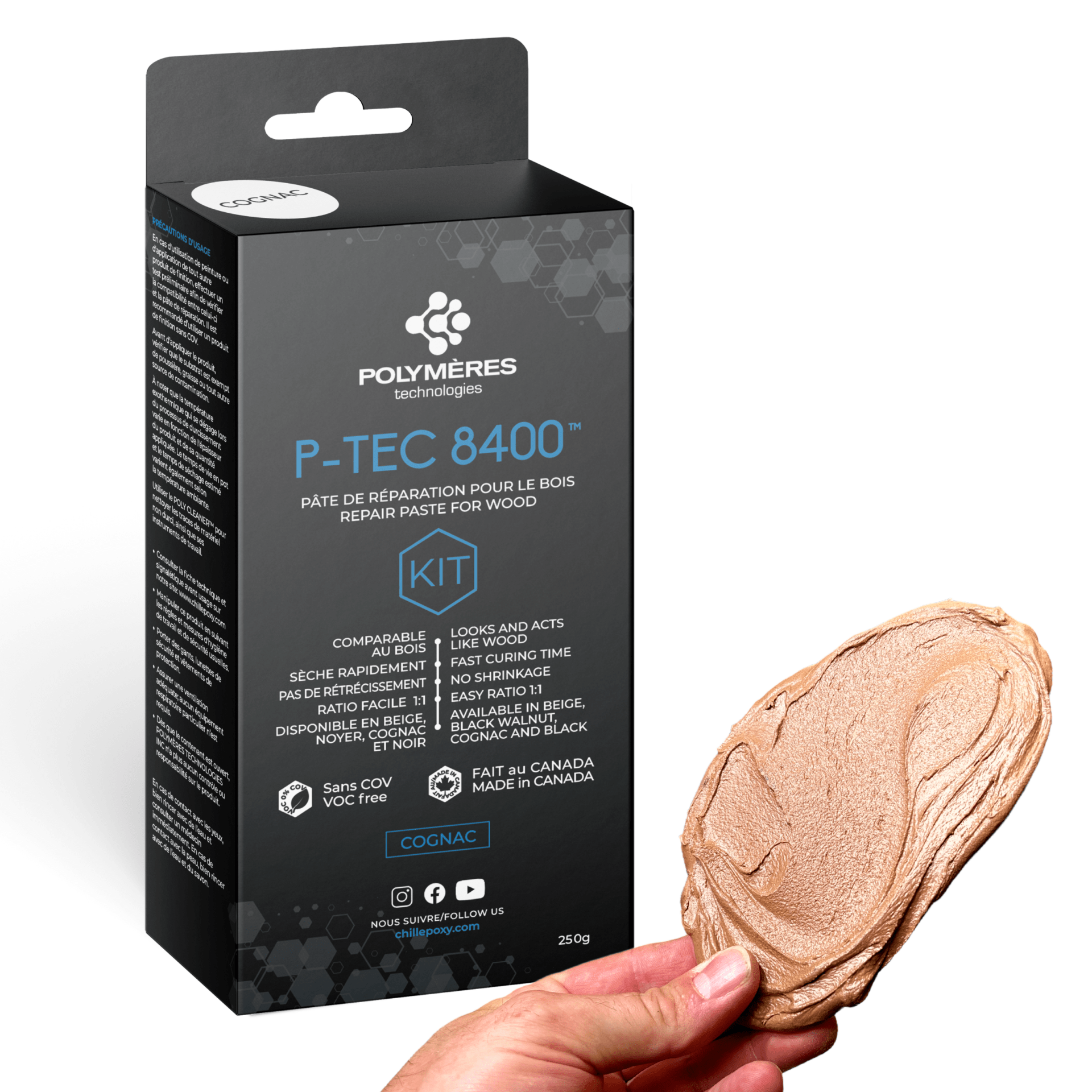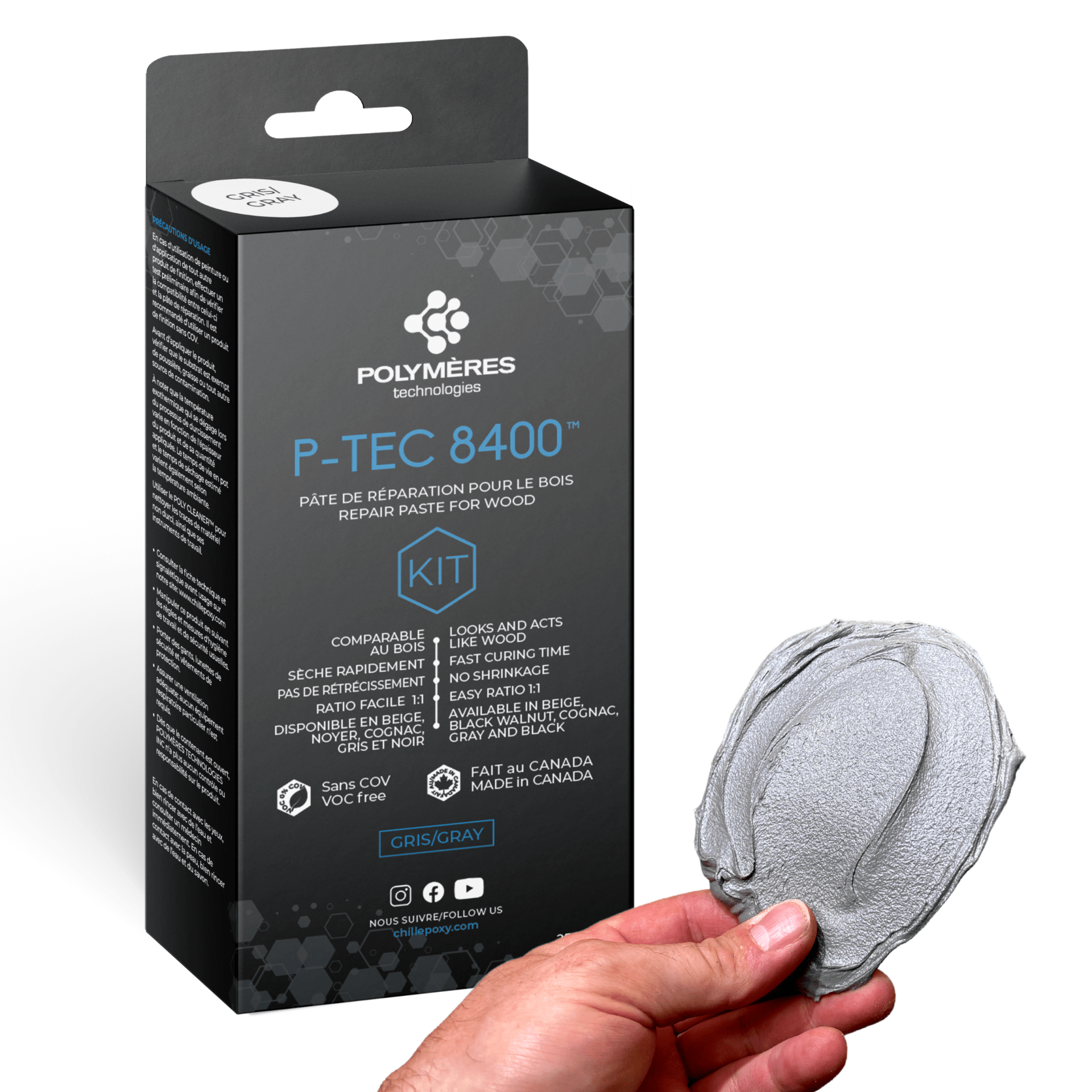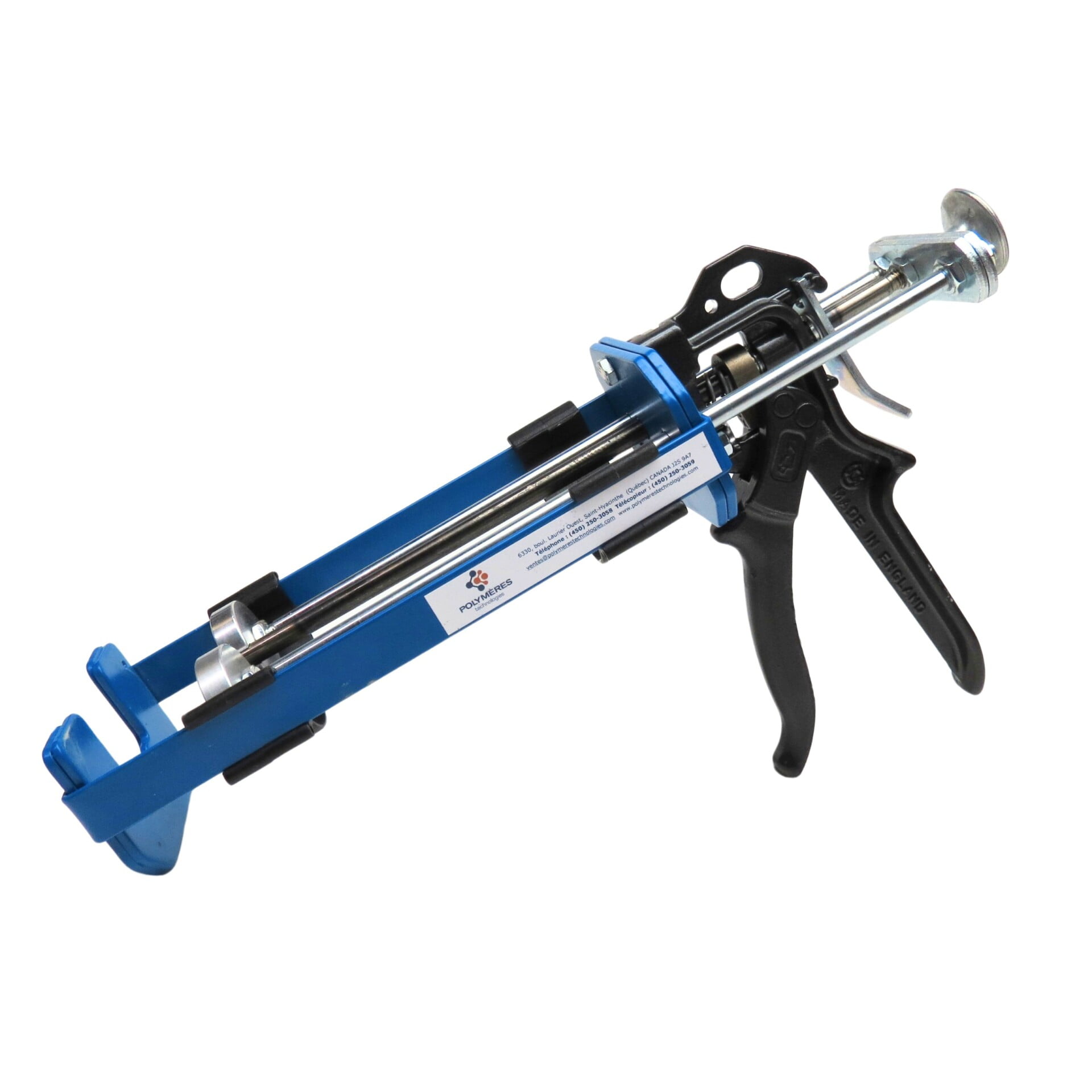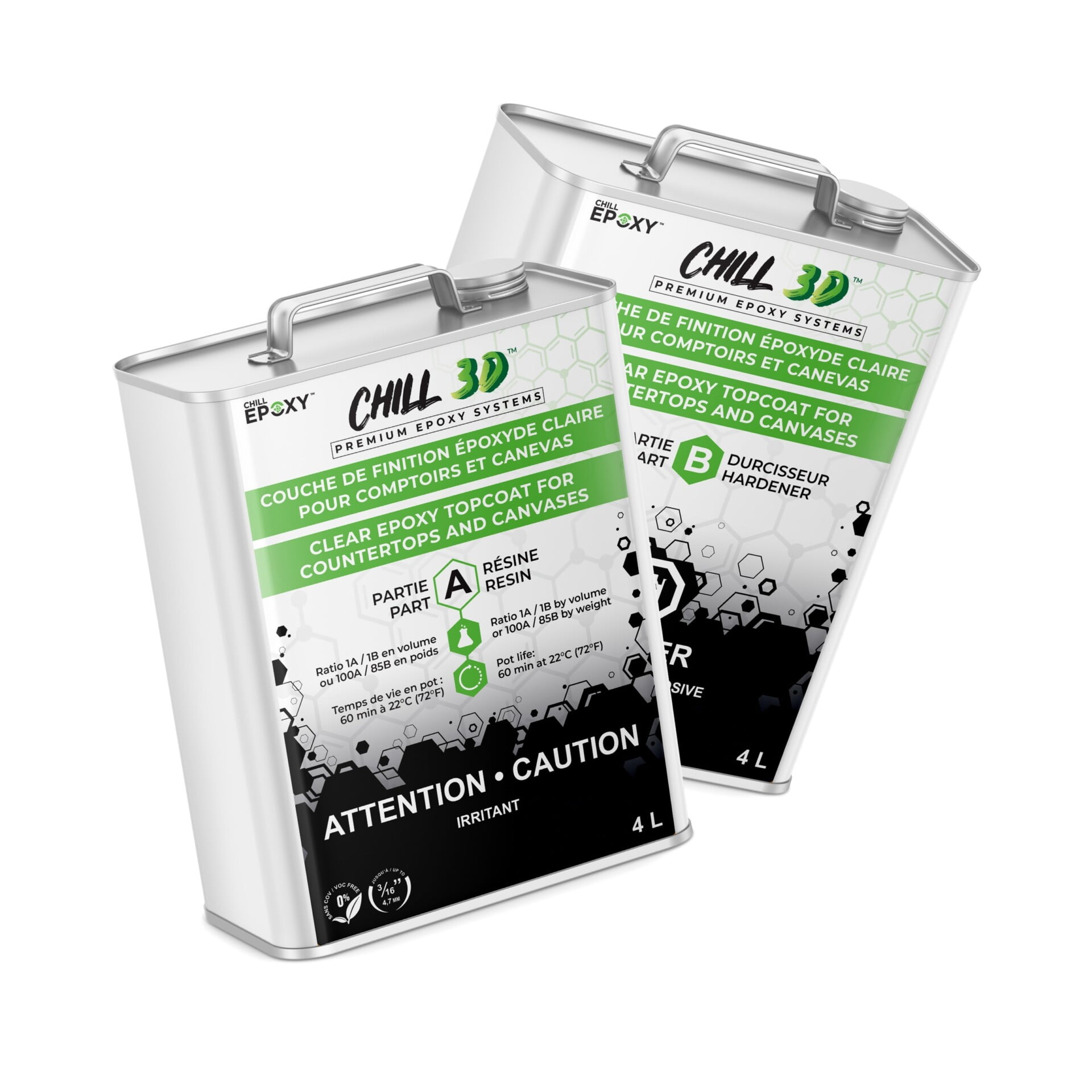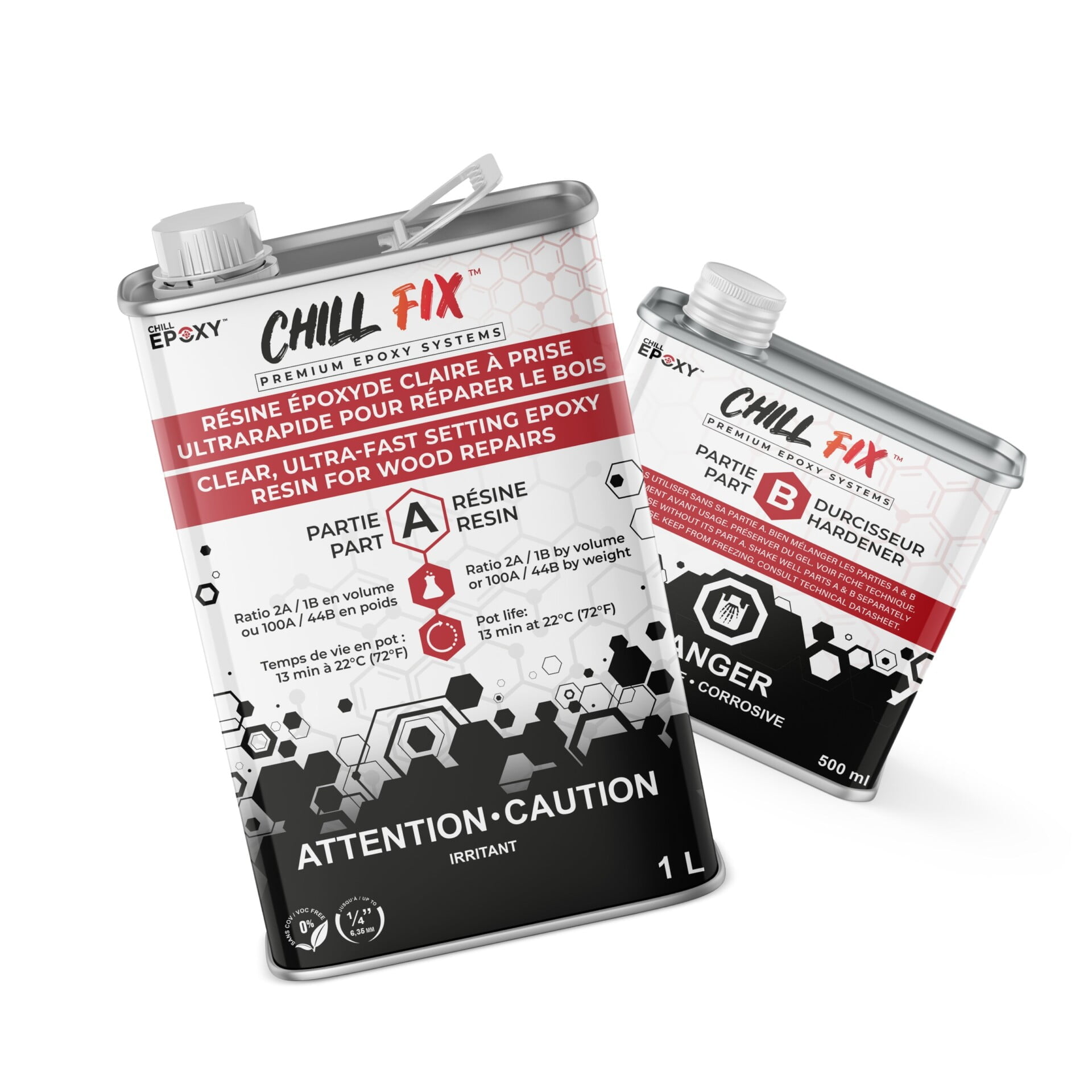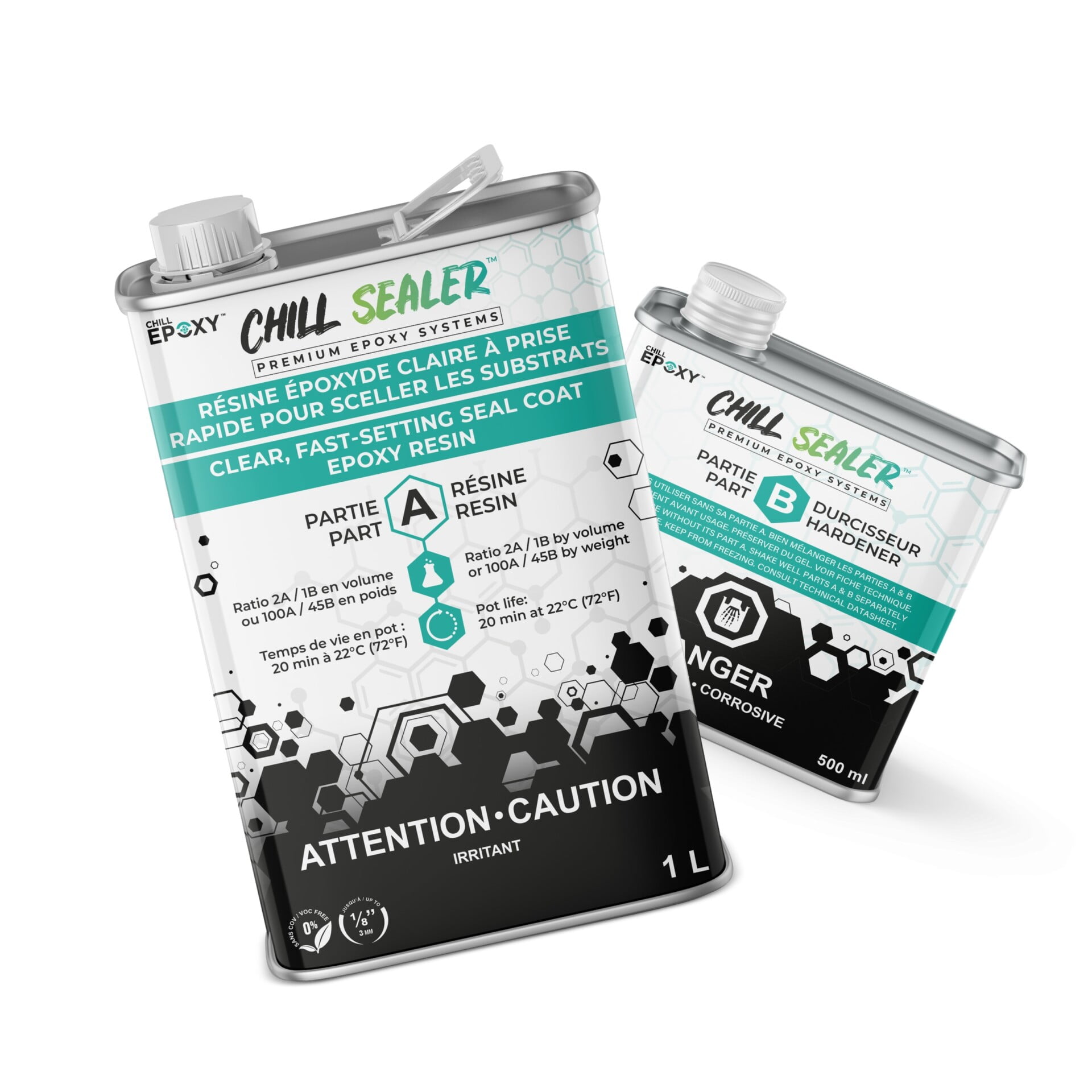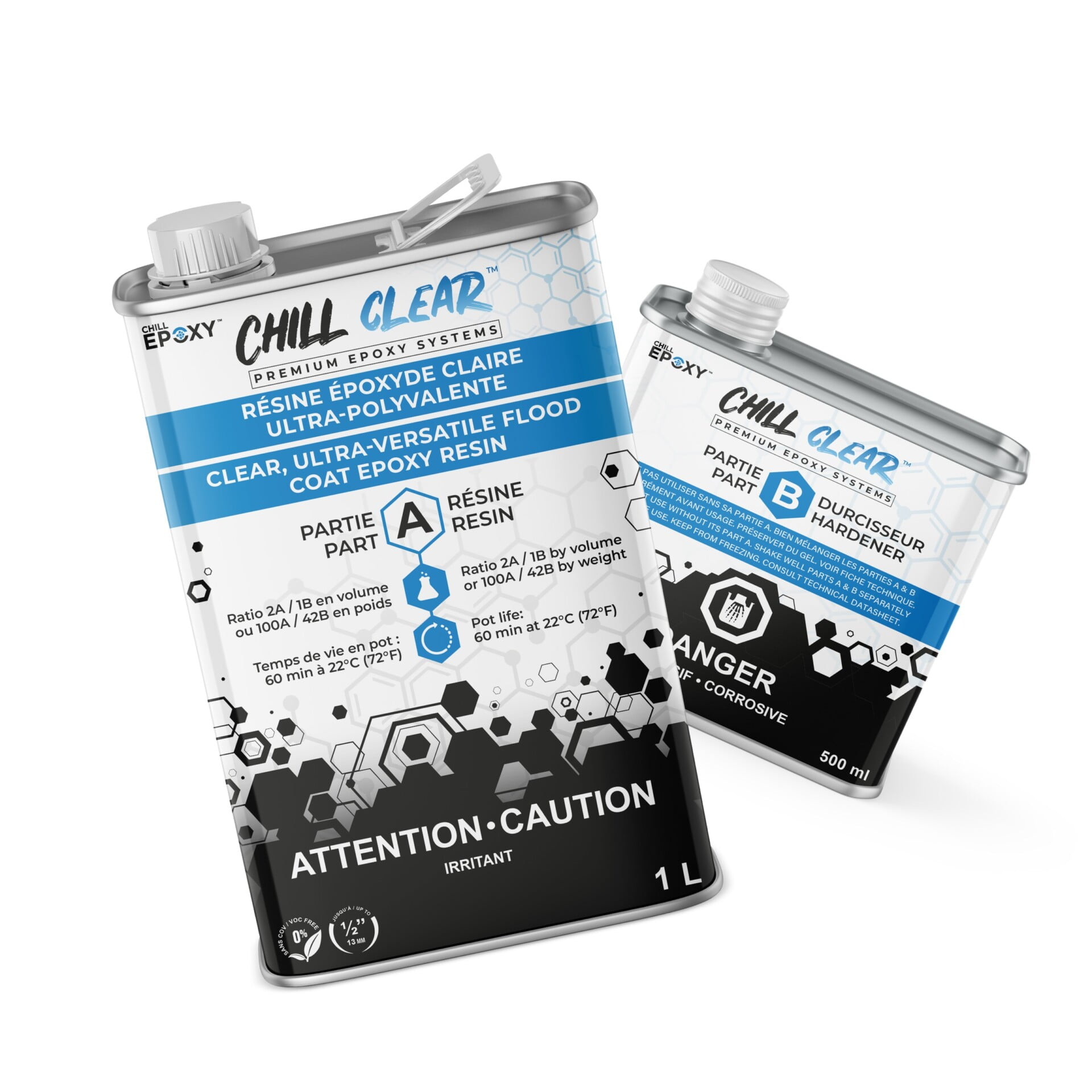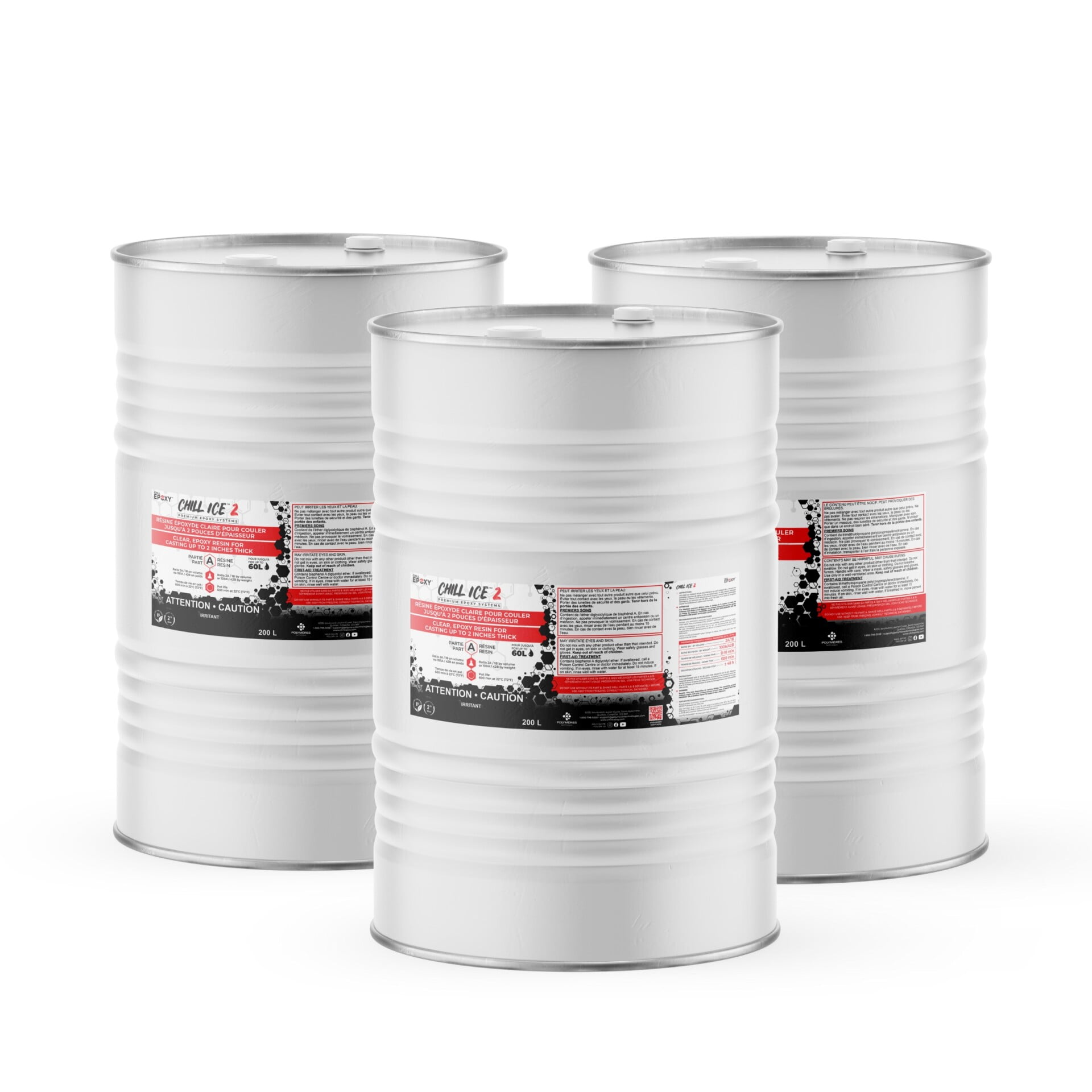Blog
Pourquoi la résine époxy jaunit-elle ?
Why is Epoxy Resin Turning Yellow?
Introduction
Why is epoxy resin turning yellow? Epoxy resin is a popular material used for various applications due to its transparency and durability. However, people who work regularly with transparent epoxy resin often struggle to preserve its clarity over time. The phenomenon of resin turning yellow can be frustrating, but understanding the causes behind it can help you prevent and overcome this issue. In this article, we will explore the reasons why epoxy resin turns yellow and provide useful tips to help you maintain its clarity.
Why is epoxy resin turning yellow? Table of Contents
- Exposure to Ultraviolet Rays and Oxidation
- The impact of amines in epoxy resin hardeners
- Addition of ultraviolet “resistant” ingredients
- Quality of raw materials
- Poor Mixing
- Importance of the right amount of hardener
- Effects of improper mixing
- Casting Thickness and Exotherm
- The exotherm law and resin mass
- Consequences of casting thicker layers
- Preventing Yellowing
- Limiting exposure to UV rays and oxidation
- Importance of precise measurements and thorough mixing
- Selecting the appropriate resin for intended use
- Conclusion
1. Exposure to Ultraviolet Rays and Oxidation
One of the primary causes of epoxy resin yellowing is its exposure to ultraviolet (UV) rays and oxidation. Epoxy resin hardeners often contain amines, which can be sensitive to UV rays. Over time, this sensitivity can lead to a loss of clarity or yellowing in the resin, even after catalysis. Manufacturers address this issue by adding ultraviolet “resistant” ingredients to the hardener’s formula. However, it’s important to note that these formulations may not completely prevent yellowing in the short or long term. Some resin formulas without anti-UV ingredients can still offer excellent long-term clarity if they use high-quality raw materials free from impurities.
- Poor Mixing
Proper mixing is crucial for achieving optimal resin catalysis and preventing yellowing. Resins are a result of chemical reactions, and the right amount of hardener (catalyst) must be added to the resin in the correct ratio. Adding more or less hardener than the indicated ratio will not yield the desired results. In fact, it can lead to a sticky resin that fails to polymerize effectively and may contribute to yellowing. To understand this, let’s imagine a group of girls (part A molecules) and boys (part B molecules). The resin polymerizes properly only when each molecule finds its partner, closing the molecular chain. When molecules remain isolated, the resin becomes unstable, sticky, and prone to yellowing. Therefore, precise measurements and thorough mixing are essential to avoid these issues.
- Casting Thickness and Exotherm
The casting thickness of epoxy resin plays a significant role in yellowing. A fundamental principle known as the exotherm law explains this relationship. According to this law, the larger the mass of resin, the more heat is generated as the molecules rub against each other. A faster exotherm leads to faster resin catalysis. Therefore, it is crucial to select resins with appropriate pot life and curing time based on the thickness of the desired casting. Using a resin formulated for thin layers to cast thicker ones can result in overheating, shrinkage, surface irregularities, and ultimately yellowing or browning of the resin. Adhering to the exotherm law ensures a controlled curing process and minimizes the risk of yellowing.
- Preventing Yellowing
To prevent epoxy resin from yellowing, several precautions should be taken:
- UV resistance is not a foolproof solution for all types of yellowing. Even formulations without anti-UV ingredients can provide long-term clarity if high-quality raw materials are used.
- Close containers immediately after measuring the quantities of resin and hardener to limit exposure to air and oxidation. For added protection, consider using a nitrogen gas blanket to prevent oxidation.
- Measure the resin and hardener quantities precisely, following the indicated ratio. This ensures a proper chemical reaction during polymerization.
- Thoroughly mix the resin and hardener until the mixture is completely homogeneous. Proper mixing allows for the closure of molecular chains and reduces the chances of yellowing.
- Select the appropriate resin based on the intended use. For thicker layers, choose resins with longer pot life and curing time to prevent overheating and maintain clarity.
- Conclusion
Yellowing of epoxy resin can be attributed to various factors such as exposure to UV rays, oxidation, poor mixing, and improper casting thickness. By understanding these causes and following preventive measures, you can preserve the clarity and aesthetic appeal of your epoxy resin projects. Remember to choose high-quality raw materials, measure accurately, mix thoroughly, and select the right resin for your specific application. By doing so, you can ensure your epoxy resin remains clear and free from yellowing over time.
FAQs
1. Can all epoxy resins be completely protected from yellowing? UV resistance is commonly added to epoxy resin formulas to minimize yellowing caused by UV rays. However, it’s important to note that UV resistance does not guarantee complete prevention of yellowing. Factors such as raw material quality and other external influences can still contribute to resin yellowing.
2. Is poor mixing the only reason for resin yellowing? No, poor mixing is one of the reasons for resin yellowing, but there are other factors at play. Exposure to UV rays, oxidation, and using the wrong resin for specific applications can also contribute to yellowing. It’s important to address all these factors collectively to prevent yellowing effectively.
3. How can I ensure accurate measurements when mixing epoxy resin? To ensure accurate measurements, use precise measuring tools such as a digital scale. Follow the indicated ratio of resin and hardener provided by the manufacturer. Taking the time to measure accurately will help you achieve the desired chemical reaction and reduce the risk of yellowing.
4. Can epoxy resin yellowing be reversed or fixed? Once epoxy resin has turned yellow, it is challenging to reverse the process. Prevention is the best approach. By following the recommended practices and using high-quality materials, you can significantly reduce the chances of resin yellowing.
5. Can I use epoxy resin for both thin and thick castings? Epoxy resins are available in different formulations suitable for various casting thicknesses. If you plan to cast thicker layers, it is advisable to use resins specifically designed for that purpose. These resins have longer pot life and curing time, which helps maintain clarity and reduces the risk of yellowing.



